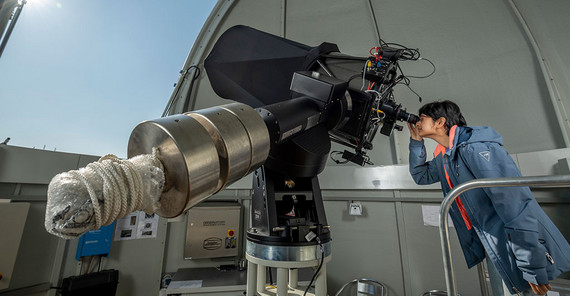What did you do before you started your fellowship at the University of Potsdam?
Before I came here, I worked as a postdoctoral research fellow in the Binary Black Hole Astrophysics (B Massive) research group at the University of Milano-Bicocca. I have been working on using and developing Bayesian analysis methods for analyzing data from the gravitational wave detectors LIGO and Virgo. During my time in Milan, I used Bayesian inference in analysis of data from pulsar timing arrays and I am working on building a robust analysis technique to detect the gravitational wave background from data.
Can you elaborate on the gravitational wave detectors and on the method you use?
These instruments are laser interferometers designed for the direct detection of gravitational waves, ripples in space-time predicted by Einstein’s General Theory of Relativity. LIGO is operated by Caltech and MIT in the United States and Virgo is hosted by the European Gravitational Observatory near Pisa in Italy. Gravitational wave signals cause length changes that are about 10,000 times smaller than an atomic nucleus. For this purpose, LIGO consists of two L-shaped detectors with 4 km arm lengths, working together although they are situated 3000 kilometers apart. These detectors are the world’s largest precision optical instruments. The Virgo instrument is equally impressive with arms 3 km long. Since 2017, the Virgo and LIGO teams perform joint observation runs and are very successful in detecting the tiny wave signals.
Concerning the method I use, Bayesian analysis, this is a method based on statistics used to estimate unknown parameters. Specifically, I use gravitational wave data from stellar mass binary black hole and binary neutron star signals to place constraints on General Relativity and to extract equation-of-state parameters.
What research project will you be working on in Potsdam?
In Potsdam, I will again work on LIGO and Virgo neutron star data. A neutron star as an object is more interesting to explore compared to a black hole, since it has more properties. I plan to develop modeling techniques to distinguish between a binary neutron star source and a mimicker, i.e. an object emitting a similar signal. What I find exciting in my research is, without the gravitational wave signal you would not know some event has happened, like the collision of two black holes or that of two neutron stars not accompanied by electromagnetic signals.
Apart from your fellowship – How does the Humboldt Foundation support you?
I already arrived at the end of October last year, and I was offered an intensive German course. That was a very useful thing to learn the language to some extent. Moreover, I was able to settle down and have some free time. The Humboldt Foundation also takes care of moving issues. In addition to my regular fellowship I get financial support for devices and travel expenses, even short stays at other institutions within Europe are paid for up to six months if needed to complete my proposed research. This is an advantage in establishing collaborations.
Your host at the University of Potsdam is Prof. Tim Dietrich, head of the Theoretical Astrophysics group. How did the collaboration with Prof. Dietrich come about?
Before I got the position at University of Milano-Bicocca, I was a junior postdoc at NIKHEF, the National Institute for Subatomic Physics in Amsterdam. At the same time, Tim Dietrich was a senior postdoc there with a Marie Curie fellowship, working on equations of state. We both analyzed data of gravitational waves emitted by binary neutron stars, but my expertise is data analysis and his is theoretical waveform modelling.
Is this your first stay in Germany?
No, I was here before for vacation, and I had visited for a conference and a talk at the Max Planck Institute for Gravitational Physics in Potsdam and Hanover respectively.
Please describe your arrival here in Potsdam. What can you say about your first weeks in the group?
I live in a flat close to Potsdam. The Welcome Center Potsdam helped me to find a place to live, and also with many other organizational issues. Without this valuable support it would not have been so easy. Since the main research focus of my working group differs a bit from mine, I do not have much overlap yet. However, I do have an ERASMUS-funded student visiting me from my previous group at Milan to work on her master's thesis and I have started supervising her.
This text was published in the university magazine Portal - Eins 2022 „Diversity“ (PDF).


